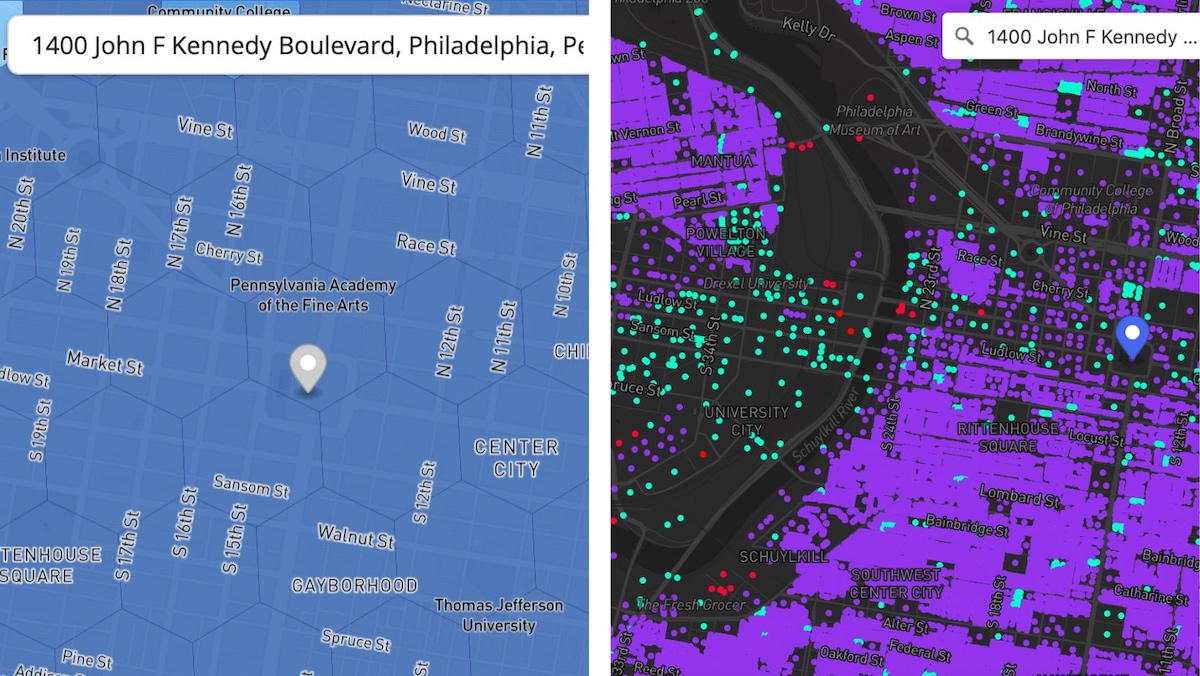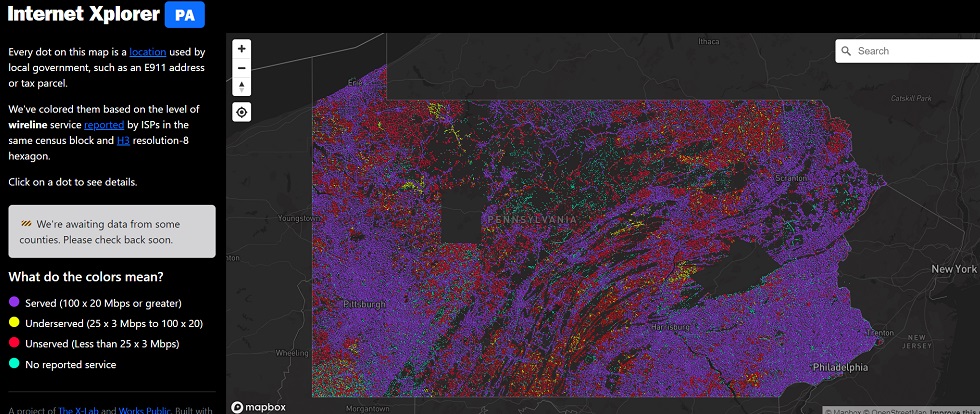The Commonwealth of Pennsylvania is preparing to give out millions of dollars to organizations across the state to support digital equity and broadband expansion. To figure out the best way to distribute that money, the state will rely on broadband maps to see which areas of the state have underserved or unserved addresses.
The Pennsylvania Broadband Development Authority (PABDA), established in February 2022, is currently developing statewide broadband plans that will guide how funds are distributed from two federal programs, Digital Equity Program and Broadband Equity Access and Deployment Program. PABDA is also currently accepting grant applications for the Capital Projects Fund’s Broadband Infrastructure Program grant with a deadline of July 10. Organizations in the state whose leaders plan to apply for grants need an accurate broadband map to determine where there are gaps in broadband service, and to plan how they will ask for funds from PABDA.
This past winter, PABDA began promoting a broadband map released by the Federal Communications Commission, which uses data collected from internet service providers. The state agency asked for challenges to the map — where it was missing data, what should be added. PABDA hasn’t yet released its own map of broadband connection in Pennsylvania, but is the process of developing one.
Penn State-based X-Lab Director Sascha Meinrath hopes state residents use his team’s new Internet Xplorer tool instead.
X Lab recently launched a beta version of Internet Xplorer, a broadband map that color codes address across the state as being served, underserved, unserved or with no reported service, in terms of broadband service. Its data comes from millions of broadband speed tests conducted by American households via tools from internet performance measurement initiative M-Lab.
To ensure that the map is an accessible resource, Internet Xplorer uses open data, open methodologies and open source code, all for free. Meinrath hopes Pennsylvanians and resident-serving organizations use it to determine how many local households are in need, and thus, determine future grant eligibility.
“This map will allow you to do that kind of planning — will actually allow you to apply for funding and document the need in your community,” he said.
Check out the Internet Xplorer map
Meinrath believes the official federal map is missing hundreds of thousands of locations throughout the state, but said X-Lab’s map shows those locations and identifies them with a turquoise dot. Missing locations on the FCC’s map means that Pennsylvania could be losing out on more potential funding.
There are only two counties of the 67 in the state that aren’t represented on the X-Lab map. When Technical.ly spoke to Meinrath at the end of May, he said Jefferson County had agreed to send its data, leaving Schuylkill County as the only hole.
With Internet Xplorer, users can zoom in to whatever area they want and see the data at address level. On the FCC map, users can also search at the address level, but the map appears less specific as they zoom out beyond a given neighborhood.
“As soon as you zoom out to the county level, you go to these hexagons that are like, ‘Oh, it’s 62% of the households here are unserved,'” Meinrath told Technical.ly. “I’m like, I need to know which ones so I need to figure out which where my fiber route goes and the fiber route has to go next to the houses that aren’t served.”

According to PABDA Executive Director Brandon Carson, the agency is working on multiple efforts to improve the FCC’s national broadband map.
“To date, the Authority has submitted over 50,000 service challenges, of which, more than 21,000 have been upheld, successfully enabling these locations to be eligible for broadband funding. Further, with the release of the second version of the FCC map (V2), 20,000 additional Broadband Serviceable Locations (BSLs) have been identified within the Commonwealth, of which over 40% are unserved,” he told Technical.ly via email. “We have developed a map to help potential applicants of our grant programs using the V2 map and FCC fabric data. A demo of the map was provided at [the June 1] PBDA Board meeting and we anticipate making it available publicly in short order.”
Meinrath and his colleagues at X-Lab have been working with other experts, including pros associated with the National Broadband Mapping Coalition, to develop Internet Xplorer. Meinrath himself has been doing national broadband mapping work since 2006, and said he’s been working on versions of this map for the last five years. This iteration has been in the works for almost a year.
With Internet Xplorer, he said, a user can “click on any address in the map and you’re going to get not only the the specific address for that dot, but what’s been reported as the maximum broadband service at that very location, and who’s serving it, that’s a huge win.” (Worth noting: This is the case for the FCC map, too.) This version of the X-Lab map is a beta, but in future versions, the team would like to overlay race and ethnicity data, and broadband speed test data.
Meinrath said he is keeping the PABDA up to date about everything his team is working on, even inviting senior members of PABDA to come spend time with his team a few weeks ago. He wants the agency to use the map his team developed and support continued work to improve that map instead of the one PABDA is developing. A PABDA spokesperson declined to comment on the record about whether the agency would use X-Lab’s map.







